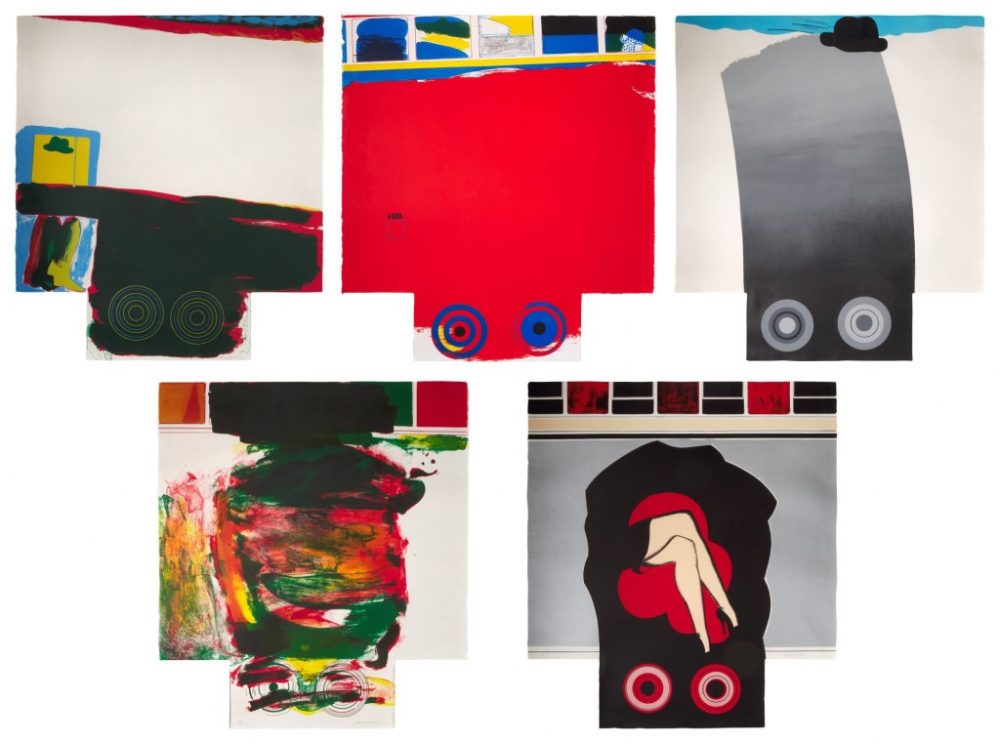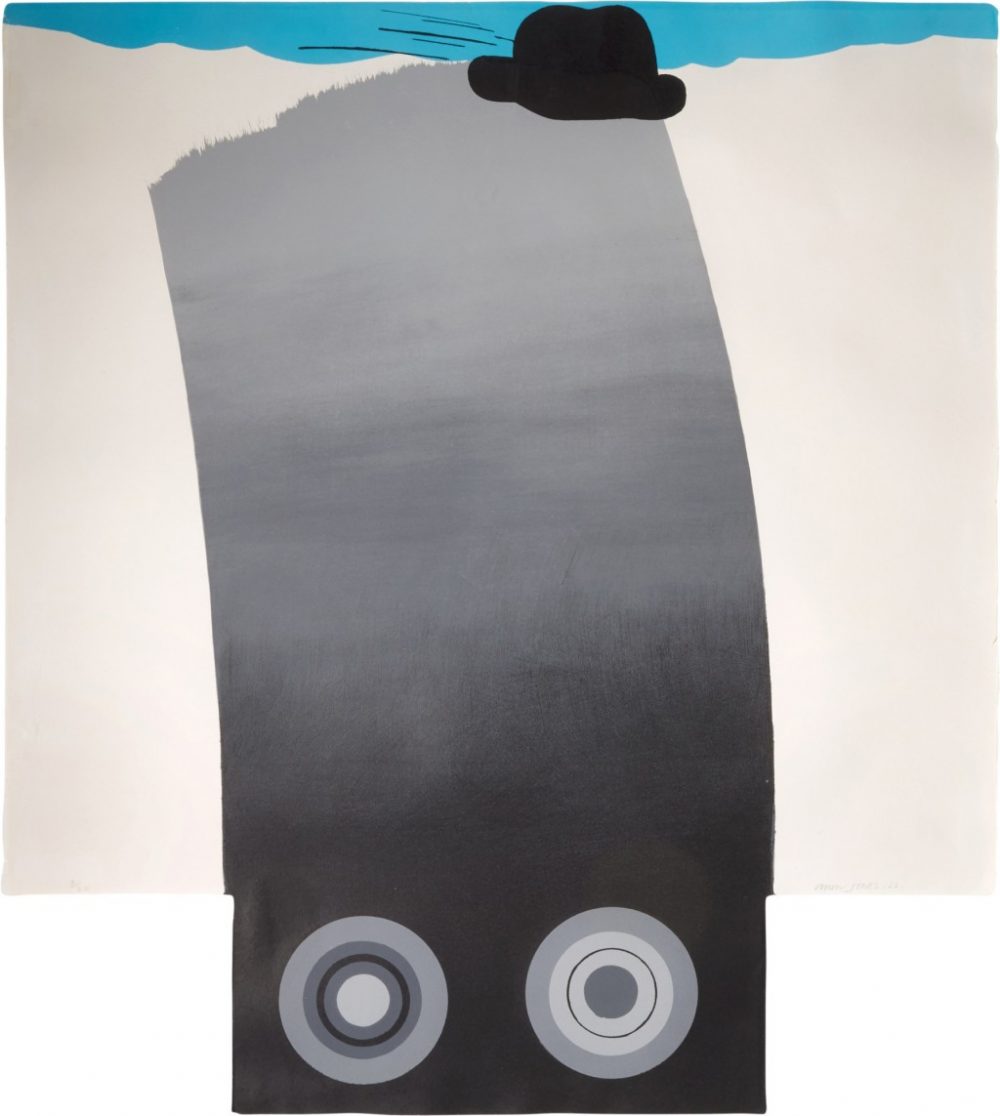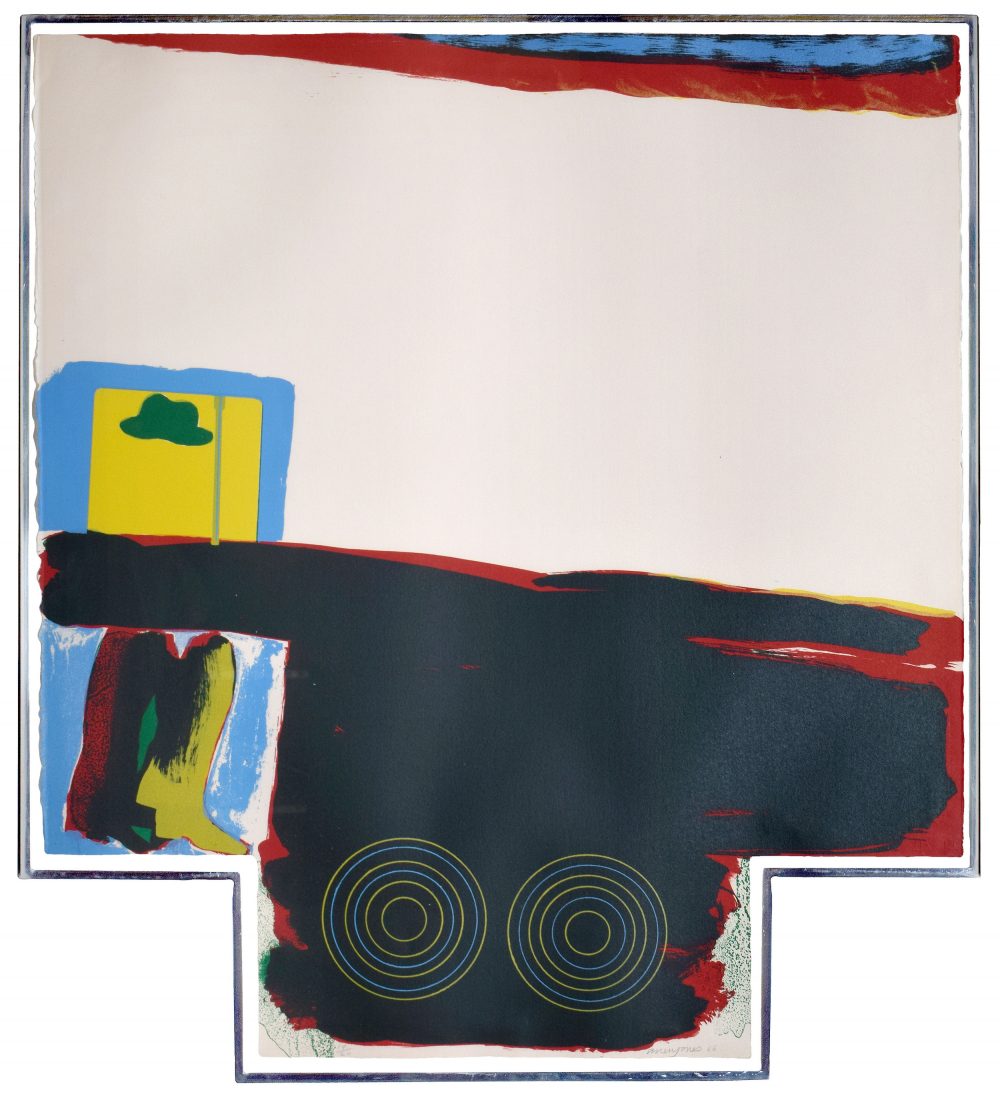Thank you for your enquiry
We will be in touch shortly.
Allen Jones
A Fleet of Buses
1st November - 26th November
Online only
By 1966 Allen Jones had been recognised as one of the foremost young artists of the British Pop Art movement. Hockney was already in California and Jones was asked to make a series of colour lithographs which would express the essence of ‘British Pop’, the new art of the everyday world. He chose the iconic red London Bus which had become the symbol of daily London life. Taking the universally known shape of the double-decker bus he simplified and modified it to become a symbol. Drawn at the outstanding Los Angeles lithography studio Tamarind and printed in an edition of just 30 impressions this ‘bus’ became one of the most admired prints of the British Pop era.
The complete portfolio of five lithographs printed in colours, 1966.
Each signed in pencil and numbered from the edition of 20.
With the original rexine-covered solander box with embossed titles and framed and signed title page.
Printed on Arches paper by the Tamarind Lithography Workshop, Los Angeles.
Published by Editions Alecto, London. (Lloyd 37 a-e)
Each sheet approx. 66.4 x 58.3 cm.
Jones made his first lithographs during his initial period of study at Hornsey College of Art, from 1955 to 1959, inspired by the professionalism of the artist who taught stained glass and by 1963 he was able to remark:
‘Lithography is now so automatic to me that there is no ceremony attached to working in this medium, hence I try to develop more original ideas this way before they appear in my paintings as a sort of automatism’.
On completing his one-year teacher training course at Hornsey in the summer of 1961, he had taken up a teaching post in lithography at Croyden College of Art. One of the artist’s notebooks from that autumn reveals the extent to which he immersed himself in both the history and technical possibilities of the medium. Citing the examples of Pierre Bonnard, Marc Chagall and Pablo Picasso, he notes that lithography in the twentieth was allied more closely to painting than to drawing.
The ethos of American Abstract Expressionism, which Jones encountered as a student in the late 1950s, clearly lies behind this continuing determination to preserve a strong element of spontaneity as a counterbalance to calculation when making his final marks. His concern with the relation of the image to the paper, his insistence on the material identity of each mark and his tireless examination of the interaction of colours has been as single-minded as that of colour-field painters or ‘post-painterly’ abstractionists.
‘I think through my lithographs. Ideas which later crystallize into paintings, intentionally or otherwise, often appear in some form or other in my lithographs long beforehand. There is for me more ceremony to commencing a painting than a lithograph where one can simply drag out another stone or plate, if the previous one seems unsatisfactory. On a canvas it is possible to mould or erase, whereas one has to live with a mark when once it is printed. Often, therefore, a lithograph can take an unexpected turn and throw up more radical solutions than in a painting where I have the idea and slowly hammer it out’.
– Allen Jones talking to Sally McLaren and Peter Daglish ‘Printmakers Council Magazine, No 2, November 1968.
The shaped-canvas Bus paintings of 1962 were re-interpreted in lithographic form in this 1966 portfolio A Fleet of Buses. This was his first time working with the Tamarind Workshops, a portfolio of five intensely coloured and eccentrically shaped lithographs plus the title page. Although eager to work with one of the most esteemed print workshops in the country, and to learn from its member’ expertise, he proved himself to be unafraid of breaking the usual rules. Paper was meant to be handled with respect. Yet there was good reason to remove those sections of the printed sheet that would otherwise have been left blank: Jones conceived of the prints without their two lower corners, so that the two circular forms along the bottom edge would be read as the wheels of the vehicle, just as he had used small individual canvases to similar effect in this shaped bus paintings of 1962.
‘I made two folios at Tamarind, ‘Buses’ and ‘A New Perspective on Floors’. In the first I used a familiar theme to me, tearing the bottom two corners away from the paper to form my bus shape. I felt this tearing of the hand-made paper was particularly instructive to the workers at Tamarind who have a kind of holy regard for ‘the print’.
– Allen Jones
This portfolio, 'A Fleet of Buses', is available to view in the gallery. We are open Monday - Friday 10am - 5pm.
The complete portfolio of five lithographs printed in colours, 1966.
Each signed in pencil and numbered from the edition of 20.
With the original rexine-covered solander box with embossed titles and framed and signed title page.
Printed on Arches paper by the Tamarind Lithography Workshop, Los Angeles.
Published by Editions Alecto, London. (Lloyd 37 a-e)
Each sheet approx. 66.4 x 58.3 cm.

David Hockney
David Hockney Will Come
3rd - 24th October 2023
Online Exhibition

Ana Andreeva
IN CONTEXT
10.07.2023 - 10.08.2023


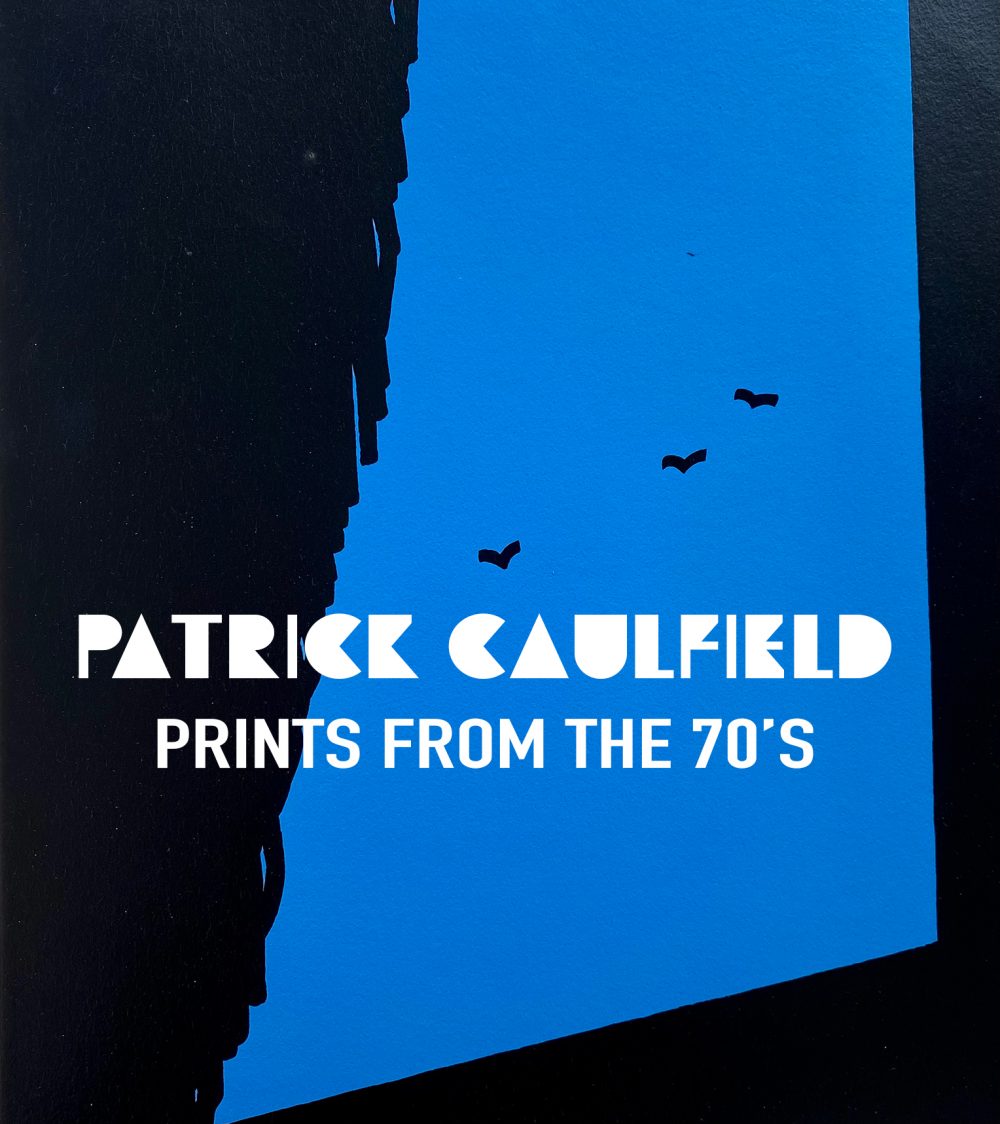

Pablo Picasso
La Célestine

Joan Miró: Works from Album 19
8th March - 5th April 2022

Henry Moore
Sculptural Ideas
3rd February - 3rd March 2022

Sam Francis
Poèmes dans le Ciel (Poems in the Sky)
17th January - 21st February 2022

Pop Art in Print
2 - 30th August 2021
Online Exhibition

Aaron Kasmin
Always a Show
16th September - 28th October 2021

Gerald Laing
Reclining Figure Relief Painting
Viewing Room

Chihuly
22nd July - 5th September 2021
Online Only
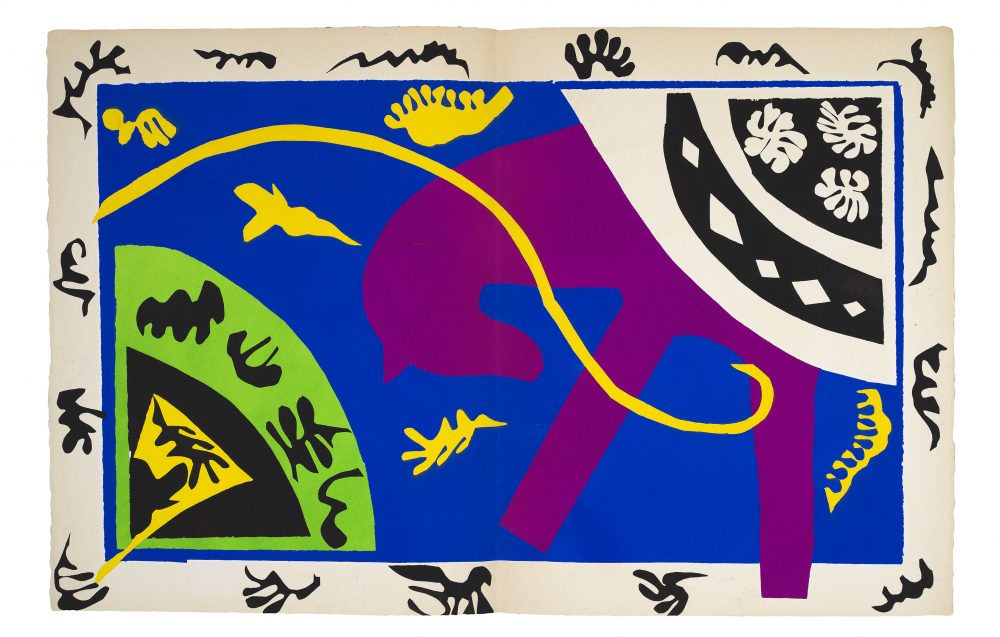
Henri Matisse
Jazz
20th May - 13th June 2021
Online only

Eileen Cooper
Nights at the Circus
4th March - 14th May 2021

Henry Moore
The Art of Poetry
26th January - 26th February 2021
Online Only
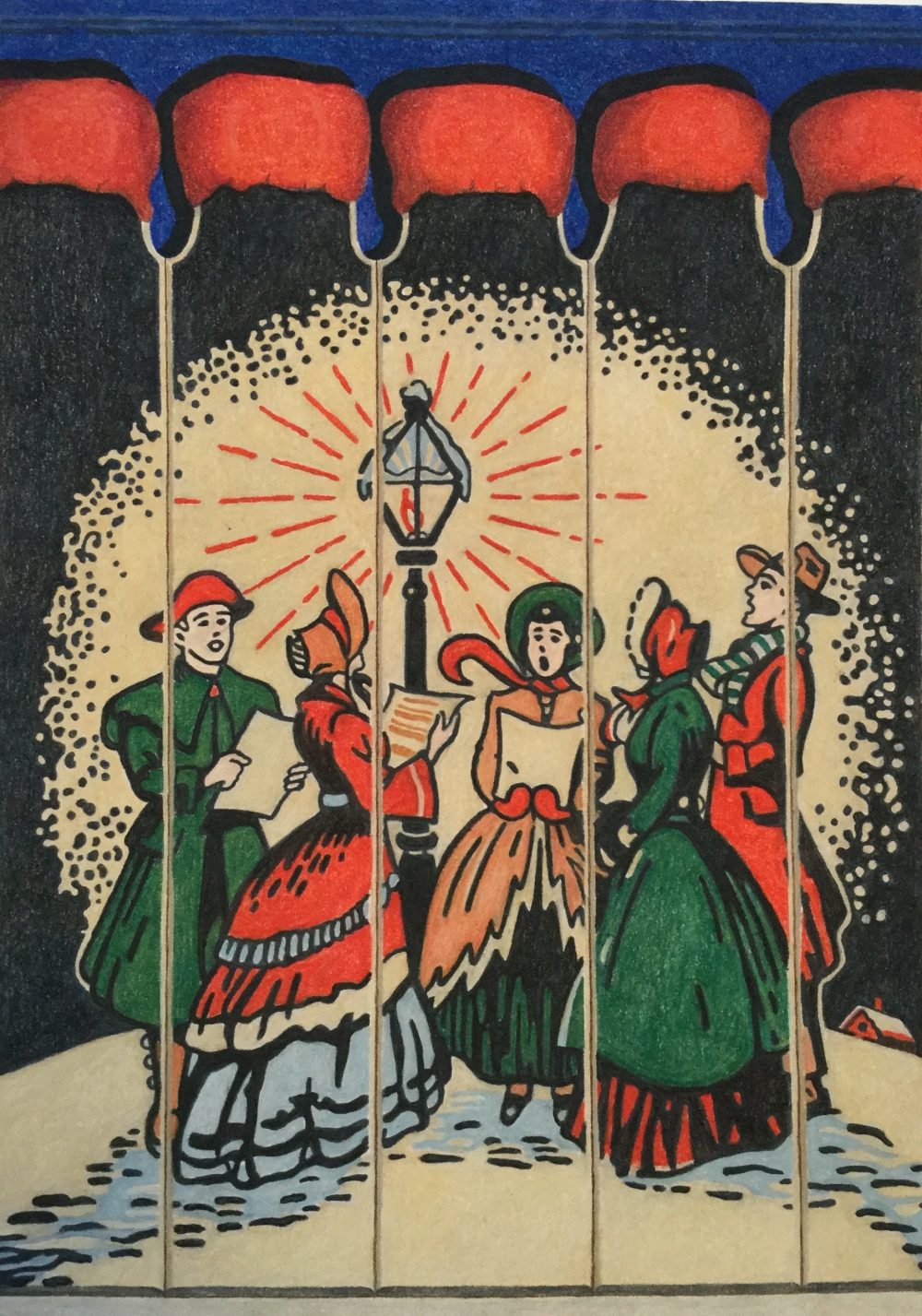
Curated highlights from Emily Tobin
Ring out, wild bells
10th December 2020 - 2nd January 2021
Online only

Ellsworth Kelly
Back to Nature
27th November - 20th December 2020
Online Exhibition
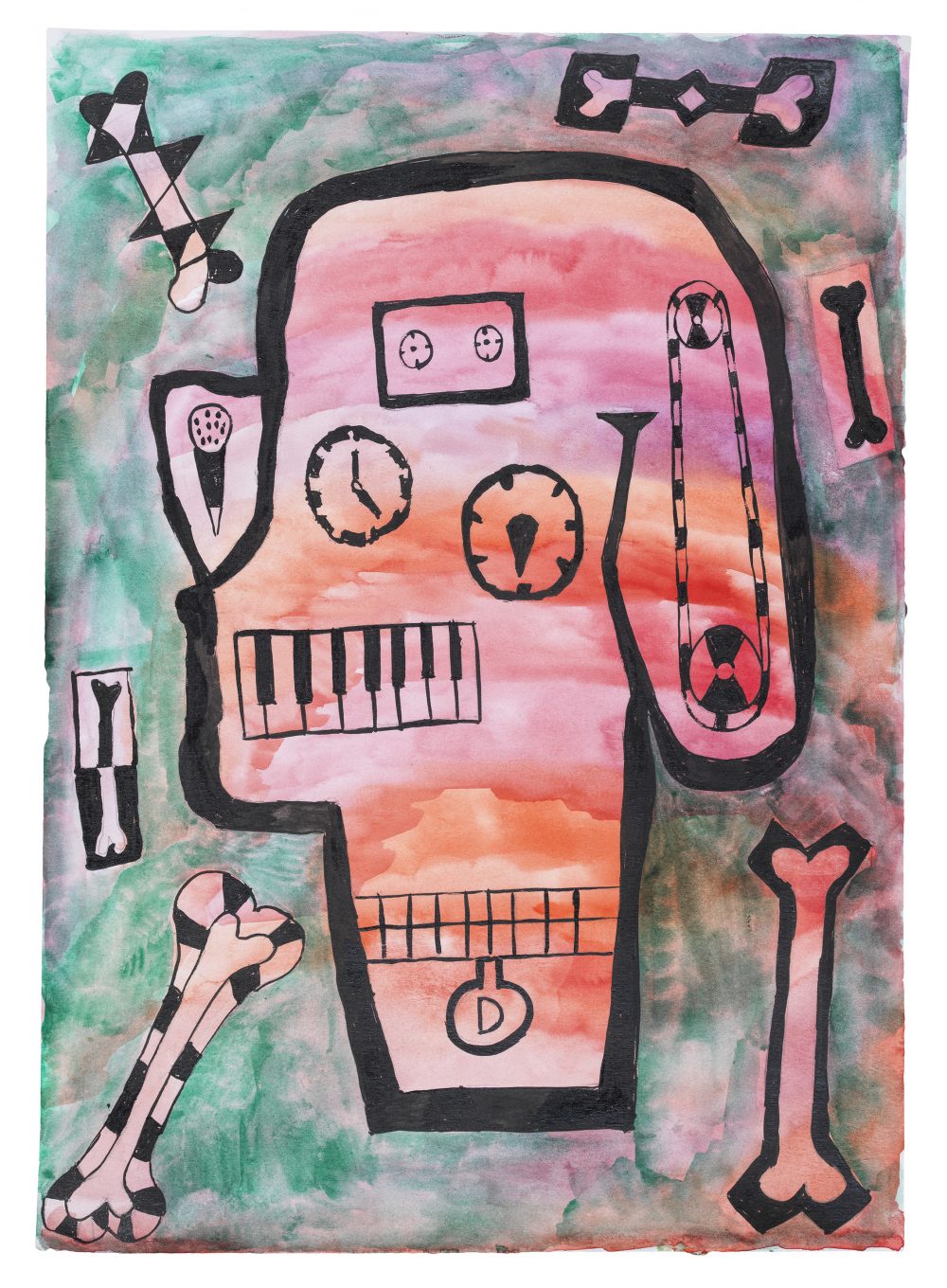
Declan Jenkins
Cinema of lava, cinema of mercury
12th November - 13th December 2020
Online Exhibition with Highlights at the Gallery

Paula Scher
All Over the Map
9th October - 8th November 2020
Online Exhibition

Howard Hodgkin
Colour Poems
28th August - 30th September 2020
Online only


